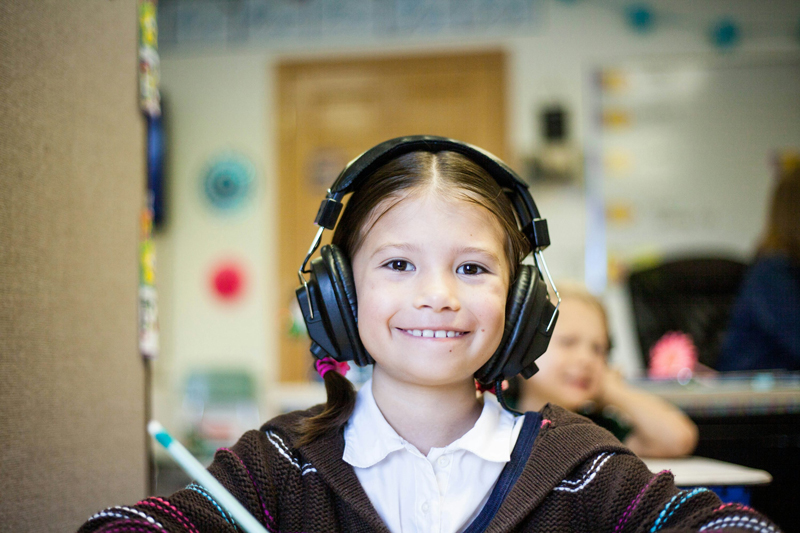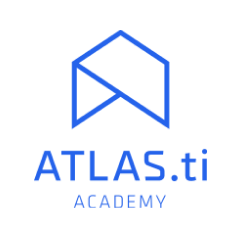Research Methods in Linguistics: Techniques, Examples & Tips
Introduction to applied linguistics
Linguistics research focuses on language structure, use, and social context. It applies a range of methods to gather data and analyze patterns in spoken or written communication. Researchers can track language changes, examine how language influences thought, and look at the role of context in meaning. Through thoughtful design and detailed analysis, it is possible to draw rigorous findings and interpret how individuals or groups communicate.
This article discusses several qualitative and quantitative methods, from experiments to ethnographic studies. It also outlines ways to apply these approaches effectively. The goal is to provide practical guidance for anyone studying language, whether they are new to the field or seeking new perspectives.

What is linguistics research?
Linguistics research examines language as a structured system of symbols and sounds. Scholars investigate how individuals produce speech, interpret meaning, and form written communication. In many cases, studies concentrate on specific parts of language, such as phonetics (speech sounds), syntax (sentence structure), and semantics (meaning). Research also addresses how social and cultural factors shape language use, and how languages evolve across different populations.
One goal of linguistics research is to describe language in a precise, systematic way. Through careful examination, findings can show patterns in spoken and written forms, highlight how language changes over time, or outline how children acquire language. This process often involves gathering data from speakers, transcripts, experiments, or archived materials. Researchers then develop questions and use recognized methods to analyze these data, looking for consistent trends and unexpected results. Linguistics research can involve theory-building, where scholars propose frameworks to explain how language is structured and how it functions in various settings. Some theories address cognitive processes, aiming to show how language ability emerges in the mind. Other work looks at the social aspects of language, examining how different groups share or modify specific forms of speech and writing. For instance, sociolinguistics might focus on how speakers from distinct regions or social backgrounds vary in pronunciation or vocabulary.
Apart from theory, researchers in linguistics may gather practical insights. Language educators often apply findings on second language acquisition to shape effective teaching methods. Speech-language pathologists rely on phonetic and phonological research to address communication difficulties. Technology-focused linguists apply computational methods to develop tools for machine translation or speech recognition. Different approaches in linguistics research call for different types of data. Some scholars concentrate on quantitative data, analyzing patterns across large corpora. Others focus on qualitative data, conducting interviews, or observing natural interactions. A solid research design typically includes a clear question, suitable data collection methods, and a well-defined analysis plan. These steps support rigor and clarity in describing language-related phenomena.
Why do research in linguistics?
Linguistics research addresses questions about language in various contexts, from classroom instruction to technology development. By examining how people produce and understand words, sentences, and discourse, researchers provide insights that guide practical decisions in education, healthcare, and policy. For instance, educators may adapt lesson plans based on findings about language acquisition, while developers use linguistic data to refine applications for speech recognition or automated translation.
Another motivation is the investigation of language variation and change. This line of work often highlights how social and cultural elements influence the ways in which communities speak or write. Sociolinguists might study differences in pronunciation or word choice across regions or social groups, while historical linguists may track how languages shift over time. Such inquiries reveal connections between communication patterns and factors like identity or group membership.
Linguistics research also has a place in settings that emphasize cross-cultural communication and collaboration. Observing how language behaves in diverse circumstances can reduce misunderstandings in international business, government negotiations, and community outreach programs. Researchers can analyze practical language usage and propose guidelines that help people communicate more effectively, whether they are drafting public health messages or discussing legal agreements.
Addressing language disorders is another area where research plays a key role. Speech-language pathologists and clinical linguists design therapies based on precise descriptions of sounds, grammar, and social usage. Accurate data and analysis help professionals tailor interventions for children and adults who face communication barriers. Findings in this field may lead to methods that improve reading instruction or assist those recovering from speech impairments.
Additionally, linguistics researchers often focus on language preservation. Many of the world’s languages face a risk of disappearing due to shifting cultural or economic conditions. Systematic documentation of these languages captures their unique features, which hold significance for communities and researchers alike. This process may involve creating written records, audio archives, or digital resources to support revitalization efforts.
What are linguistics research methods?
Linguists use a range of approaches to gather and interpret data about language. Choices often depend on the nature of the research question, the resources available, and the kind of insights sought. These methods can be qualitative, quantitative, or a combination of both. Qualitative methods concentrate on interpreting detailed, context-specific information, while quantitative methods use numerical analysis to identify measurable trends. The following sections outline a number of methods commonly used in linguistics. Each approach has strengths and limitations, and researchers frequently adapt methods to fit the context of the study or the population under examination.
Experimental methods
Experimental research involves controlled procedures to measure specific variables related to language comprehension, production, or perception. Participants might be presented with tasks such as identifying words, responding to auditory stimuli, or reading sentences under time constraints. Researchers systematically vary one or more factors, then measure how changes influence outcomes like reaction times, accuracy, or judgments about acceptability. This structured environment allows researchers to draw connections between cause and effect more directly. Typically, experimental work uses statistical tools to analyze results and assess whether observed differences are significant. While this approach can provide clarity on specific linguistic processes, it may not reflect the complexity of everyday communication.

Discourse analysis
Discourse analysis focuses on how language is used beyond isolated sentences, placing emphasis on context, purpose, and interaction. This method involves examining written or spoken texts, ranging from casual conversations to political speeches. Analysts consider how individuals organize ideas, negotiate meaning, and build relationships through linguistic choices. They might note patterns of turn-taking in dialogue or trace how topics are introduced, shifted, and concluded. Through a close look at real-life language use, discourse analysts gain insights into how social roles, power dynamics, or cultural norms shape communication. Data often include transcriptions or digital recordings, and the approach calls for careful observation of patterns in structure, vocabulary, and participant behavior.

Content analysis
Content analysis applies systematic coding to large sets of textual or media-based data. Researchers design categories that reflect the focus of the study, then classify units of content—such as words, phrases, or themes—into these predefined groups. This method can work with print media, social media posts, or interview transcripts. The outcome is a set of numeric data that reveal the frequency or distribution of certain features or ideas. Although it is rooted in categorization, content analysis can also incorporate interpretive elements if the research question invites a deeper look at the meanings behind coded items. Consistency is a priority, so coders are usually trained on how to apply categories, ensuring that final tallies are accurate.
Conversation analysis
Researchers looking at how language is used in speech will employ conversation analysis techniques in order to identify and analyze key features of speech such as intonation, word stress, pauses, and pronunciation. Conversation analysts mark up transcripts of speeches, conversations, and other forms of oral communication with a specific notation that represents these features in text form for analysis through qualitative or mixed methods. The conclusions drawn from this form of analysis can help identify how different cultures or communities use language in everyday situations.

Narrative analysis
Narrative analysis looks at the stories people share in interviews, journals, or conversation. This method considers how individuals structure accounts of events or experiences. Researchers note how speakers present characters, organize plotlines, and convey a point of view. They might also attend to the cultural or social context of storytelling, exploring how narratives shape group identity or personal understanding. Narrative analysis can overlap with other approaches such as discourse analysis, but its primary focus is on the sequence and structure of a story as a whole. It also pays attention to the purpose of storytelling, acknowledging why people choose to tell certain stories and how they adapt them for different audiences.

Linguistic ethnography
Linguistic ethnography involves observing language in its natural setting. Researchers often carry out fieldwork, spending time in classrooms, workplaces, or communities to observe language use as a part of everyday life. They gather notes, recordings, or interview data to document how participants communicate in routine interactions.
This approach prioritizes firsthand observation to understand how speakers select words, switch between languages, or follow cultural conventions around conversation. Analysts can focus on how language practices relate to social structures or individual experiences. Data collection may span extended periods, allowing researchers to track changes in communication patterns over time. Linguistic ethnographers often combine their direct observations with interviews to capture participants’ own perspectives.
Types of research in linguistics
Researchers in linguistics often select from different approaches depending on their specific objectives, the nature of their data, or the theoretical perspectives they find most helpful. The following sections outline several types of research that are commonly pursued within the discipline. Each focuses on distinct dimensions of language, such as large-scale patterns, cognitive processes, social influences, real-world applications, or teaching practices. While these areas sometimes overlap, they maintain their own methods, questions, and traditions.
Corpus linguistics
Corpus analysis relies on collections of texts or transcribed speech, known as corpora, to investigate language usage. These resources can be small or extensive, containing anything from classroom transcripts to billions of words drawn from various written and spoken sources. Researchers systematically analyze corpora to detect recurring patterns in vocabulary, grammar, and collocation. Automated tools often facilitate tasks like frequency counts, keyword extraction, or analysis of phrase structures.
his quantitative perspective can highlight how language is used in different contexts, including online communication, scientific writing, or casual speech. Some scholars integrate qualitative checks by examining specific examples in detail, ensuring the data reflect everyday language behavior. Corpus-based studies can shed light on language change over time, regional variations, or shifts in style across domains.

Cognitive linguistics
Cognitive science explores how language relates to mental processes, focusing on concepts such as categorization, metaphor, and meaning construction. Scholars in this field propose that language mirrors how people perceive and conceptualize the world. They look at how the mind structures knowledge and how that structure emerges in vocabulary or grammar.
For instance, metaphor analysis can show how speakers talk about abstract ideas in terms of physical experiences. Cognitive linguists might draw on experiments or data from neurolinguistics to learn more about how linguistic forms are represented in the brain. While some of this work is theoretical, it also has practical applications, such as informing how learners grasp new concepts in a second language or how language shapes thought and behavior.

Sociolinguistics
Sociolinguistics focuses on how language intersects with social context. Researchers investigate language variation across region, age, gender, or social class. They also look at the roles of community norms and power relationships in shaping everyday communication.
To collect data, sociolinguists may record conversations or conduct surveys, asking questions about attitudes toward various accents or dialects. Analysis reveals how speakers align with or distance themselves from specific groups through phonetic choices, vocabulary, or speech patterns. Observations can uncover how linguistic differences signal identity and how stereotypes about language develop. In multilingual settings, researchers may track how individuals switch between languages for specific purposes or audiences. Sociolinguistic findings can inform policies on language education, planning, or rights, especially in multicultural or multilingual societies.

Applied linguistics
Applied linguistics addresses language-related challenges in educational, professional, or societal settings. It takes findings from descriptive or theoretical linguistics and applies them to real-world contexts. This field often looks at second language teaching methods, curriculum design, and language assessment tools. Applied linguists might also focus on interpreting, translation, or language policy in workplaces or government agencies. In health contexts, practitioners might explore how medical staff communicate with patients who speak different languages, assessing the clarity of instructions or the role of interpreters.
Many research projects involve collaboration among linguists, educators, and professionals in other fields. Research methods in applied linguistics range from surveys and interviews to classroom observations, aiming to refine best practices or tackle language barriers in public settings. Because it deals with immediate concerns, applied linguistics tends to emphasize solutions and outcomes that can be measured or observed.

Language education
Language education research looks at how people learn, teach, and retain language skills, whether it is a first language, second language, or additional language. Investigations may include classroom practices, curriculum choices, or learner strategies. Some studies measure the effect of specific teaching methods, such as communicative approaches or grammar-focused activities, on student performance or motivation. Researchers in this area often rely on a mix of quantitative and qualitative data, drawing on test scores, observation notes, and interviews with teachers or learners. They might track how learners progress through language stages, noting which instruction techniques provide the most consistent improvement.
Another topic involves digital resources and online tools. Language education researchers may assess how technology-based instruction influences reading, writing, speaking, or listening. This work can inform teacher training programs, guide policy decisions about language requirements, or shape material design to suit different learner profiles.
Make research easy and insightful with ATLAS.ti
Turn your data into insights with our intuitive analysis platform. Download a free trial today.




